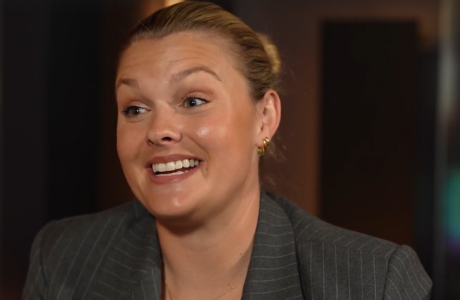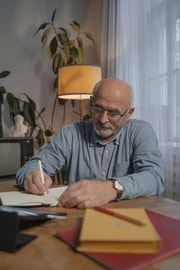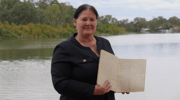TV star reveals hidden illness many ignore: 'Get yourself checked'
By
Gian T
- Replies 0
When we think of soap stars, we often imagine glitz, glamour, and a life free from the everyday struggles many of us face.
But as Home and Away’s Sophie Dillman recently revealed, even those in the spotlight aren’t immune to the challenges of living with a chronic, invisible illness—one that affects an estimated one in seven Australian women.
For years, endometriosis has been a silent burden for millions, often dismissed as 'just bad period pain' or misunderstood entirely.
But the conversation is finally changing thanks to brave voices like Sophie’s and new medical guidelines on the horizon.
Sophie Dillman, beloved for her role on the long-running Aussie soap, has lived with endometriosis for over a decade.
While her character might have faced dramatic storylines, Sophie’s real-life battle was often hidden.
She describes days on set where the pain was so intense that she relied on a hot water bottle tucked into her costume to get through filming.
‘Those days, they can hurt, being on your feet all day, running up and down, changing costumes—being in costumes that, when I’m in a flare, don’t fit,’ Sophie shared.
‘I would walk around everywhere with a hot water bottle. We’d be rolling up, and I’d pull the hot water bottle out of my pants and chuck it to the side, and one of the camera assistants would grab it in between takes.’
The constant use of heat for pain relief has even left her with permanent scarring on her belly—a physical reminder of a condition that is so often invisible to others.
Sophie’s story is, unfortunately, all too common. She began experiencing symptoms from her very first period, but it took years—and her own insistence—before she received a proper diagnosis.
Even after surgery, doctors initially dismissed her symptoms as 'just scar tissue.' It was only after Sophie demanded further testing that endometriosis was confirmed.
‘For another two of those surgeries, they woke me up and said, "It’s not endometriosis, it’s just scar tissue," and I had to say, "That’s what happened last time: that scar tissue needs to be tested," and it came back positive for endometriosis,’ she recalled.
On average, it takes Australian women between six and ten years to receive a diagnosis of endometriosis.
That’s years of pain, uncertainty, and often feeling like you’re not being heard.
Endometriosis occurs when tissue similar to the lining of the uterus grows outside the womb.
This tissue can attach to organs like the ovaries, fallopian tubes, bladder, and even the bowel, causing chronic pain, fatigue, heavy periods, and sometimes infertility.
The pain can be so severe it disrupts daily life, work, and relationships.
Despite its prevalence, endometriosis has long been misunderstood and underdiagnosed.
Many women are told their pain is 'normal' or that they’re simply unlucky.
This lack of awareness and understanding has led to years of unnecessary suffering for countless Australians.
Associate Professor Dr Magdalena Simonis, a leading expert in women’s health, says the medical system has historically neglected conditions like endometriosis.
‘If you go to any GP, you can expect pretty good treatment for diabetes. But if you go in with endometriosis, pelvic pain, or heavy menstrual bleeding, your experience can vary dramatically depending on who you see,’ she explains.
This inconsistency has left many women feeling frustrated and alone, often bouncing from doctor to doctor in search of answers.
There is hope on the horizon. Dr Simonis and a team of experts are currently reviewing Australia’s first national draft clinical guidelines for endometriosis.
These guidelines aim to help GPs better recognise the signs, speed up diagnosis, and provide clearer care pathways for women in pain.
The new guidelines aim to improve the diagnosis and management of endometriosis through several key measures.
They will provide critical diagnostic criteria to help GPs identify the condition earlier and clear referral pathways to specialist care.
Healthcare professionals will also benefit from improved education and training.
In addition, patients will have access to practical resources such as flowcharts and reference guides to understand their condition better and manage it better.
‘Up until now, the research investment in women’s health has been negligible,’ Dr Simonis says.
‘We’re teaching the health profession to listen to women and take their complaints seriously because endometriosis can present in a variety of ways.’
Sophie’s advice is simple but powerful: trust yourself.
‘Get yourself checked, back yourself; you know your body better than anyone, and if something doesn’t feel right, keep pushing for an answer,’ she urges.
‘You don’t have to live in pain, you shouldn’t live in pain, and it’s not fair that we live in pain.’
If you or someone you love is experiencing symptoms like severe period pain, pelvic pain, fatigue, or unexplained infertility, don’t be afraid to speak up.
Keep a diary of your symptoms, ask your GP about endometriosis, and don’t hesitate to seek a second opinion if you feel you’re not being heard.
While endometriosis is often thought of as a 'young woman’s disease,' it can continue to affect women well into their 40s, 50s, and even beyond—especially if menopause is delayed or if hormone replacement therapy is used.
Some women may only receive a diagnosis later in life, after years of unexplained pain or fertility issues.
For our Seniors Discount Club members, it’s important to remember that supporting daughters, granddaughters, and friends struggling with this condition can make a difference.
Sharing stories, offering empathy, and encouraging loved ones to seek help can help break the cycle of silence and stigma.
For more information and support:
Credit: YouTube
 Have you or someone you know struggled with endometriosis? Did it take years to get a diagnosis? What advice would you give to others? Share your experiences in the comments below—your voice could help someone else feel less alone.
Have you or someone you know struggled with endometriosis? Did it take years to get a diagnosis? What advice would you give to others? Share your experiences in the comments below—your voice could help someone else feel less alone.
But as Home and Away’s Sophie Dillman recently revealed, even those in the spotlight aren’t immune to the challenges of living with a chronic, invisible illness—one that affects an estimated one in seven Australian women.
For years, endometriosis has been a silent burden for millions, often dismissed as 'just bad period pain' or misunderstood entirely.
But the conversation is finally changing thanks to brave voices like Sophie’s and new medical guidelines on the horizon.
Sophie Dillman, beloved for her role on the long-running Aussie soap, has lived with endometriosis for over a decade.
While her character might have faced dramatic storylines, Sophie’s real-life battle was often hidden.
She describes days on set where the pain was so intense that she relied on a hot water bottle tucked into her costume to get through filming.
‘Those days, they can hurt, being on your feet all day, running up and down, changing costumes—being in costumes that, when I’m in a flare, don’t fit,’ Sophie shared.
‘I would walk around everywhere with a hot water bottle. We’d be rolling up, and I’d pull the hot water bottle out of my pants and chuck it to the side, and one of the camera assistants would grab it in between takes.’
The constant use of heat for pain relief has even left her with permanent scarring on her belly—a physical reminder of a condition that is so often invisible to others.
Sophie’s story is, unfortunately, all too common. She began experiencing symptoms from her very first period, but it took years—and her own insistence—before she received a proper diagnosis.
Even after surgery, doctors initially dismissed her symptoms as 'just scar tissue.' It was only after Sophie demanded further testing that endometriosis was confirmed.
‘For another two of those surgeries, they woke me up and said, "It’s not endometriosis, it’s just scar tissue," and I had to say, "That’s what happened last time: that scar tissue needs to be tested," and it came back positive for endometriosis,’ she recalled.
On average, it takes Australian women between six and ten years to receive a diagnosis of endometriosis.
That’s years of pain, uncertainty, and often feeling like you’re not being heard.
Endometriosis occurs when tissue similar to the lining of the uterus grows outside the womb.
This tissue can attach to organs like the ovaries, fallopian tubes, bladder, and even the bowel, causing chronic pain, fatigue, heavy periods, and sometimes infertility.
The pain can be so severe it disrupts daily life, work, and relationships.
Despite its prevalence, endometriosis has long been misunderstood and underdiagnosed.
Many women are told their pain is 'normal' or that they’re simply unlucky.
This lack of awareness and understanding has led to years of unnecessary suffering for countless Australians.
‘If you go to any GP, you can expect pretty good treatment for diabetes. But if you go in with endometriosis, pelvic pain, or heavy menstrual bleeding, your experience can vary dramatically depending on who you see,’ she explains.
This inconsistency has left many women feeling frustrated and alone, often bouncing from doctor to doctor in search of answers.
There is hope on the horizon. Dr Simonis and a team of experts are currently reviewing Australia’s first national draft clinical guidelines for endometriosis.
These guidelines aim to help GPs better recognise the signs, speed up diagnosis, and provide clearer care pathways for women in pain.
The new guidelines aim to improve the diagnosis and management of endometriosis through several key measures.
Healthcare professionals will also benefit from improved education and training.
In addition, patients will have access to practical resources such as flowcharts and reference guides to understand their condition better and manage it better.
‘Up until now, the research investment in women’s health has been negligible,’ Dr Simonis says.
‘We’re teaching the health profession to listen to women and take their complaints seriously because endometriosis can present in a variety of ways.’
Sophie’s advice is simple but powerful: trust yourself.
‘You don’t have to live in pain, you shouldn’t live in pain, and it’s not fair that we live in pain.’
If you or someone you love is experiencing symptoms like severe period pain, pelvic pain, fatigue, or unexplained infertility, don’t be afraid to speak up.
Keep a diary of your symptoms, ask your GP about endometriosis, and don’t hesitate to seek a second opinion if you feel you’re not being heard.
While endometriosis is often thought of as a 'young woman’s disease,' it can continue to affect women well into their 40s, 50s, and even beyond—especially if menopause is delayed or if hormone replacement therapy is used.
Some women may only receive a diagnosis later in life, after years of unexplained pain or fertility issues.
Sharing stories, offering empathy, and encouraging loved ones to seek help can help break the cycle of silence and stigma.
For more information and support:
- [Endometriosis Australia](https://www.endometriosisaustralia.org/)
- [Jean Hailes for Women’s Health](https://www.jeanhailes.org.au/health-a-z/endometriosis)
- [Australian Government Endometriosis Information](https://www.health.gov.au/health-topics/endometriosis)
Credit: YouTube
Key Takeaways
- Home and Away actress Sophie Dillman has spoken out about living with endometriosis, highlighting the debilitating impact it has had on her daily life and career.
- Endometriosis affects one in seven Australian women, yet it is often misdiagnosed, misunderstood, and can take up to six years to diagnose.
- New national draft clinical guidelines are being developed in Australia to help GPs identify and manage endometriosis more effectively, aiming to reduce diagnostic delays and provide clearer care pathways.
- Experts stress the importance of listening to women’s health concerns, improving GP education, and increasing research investment to ensure women suffering from endometriosis receive proper care and support.








